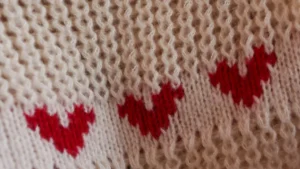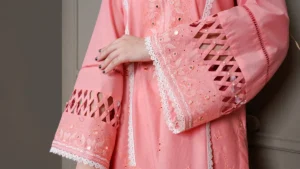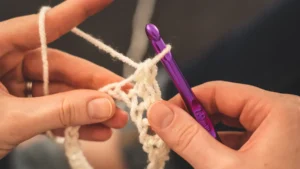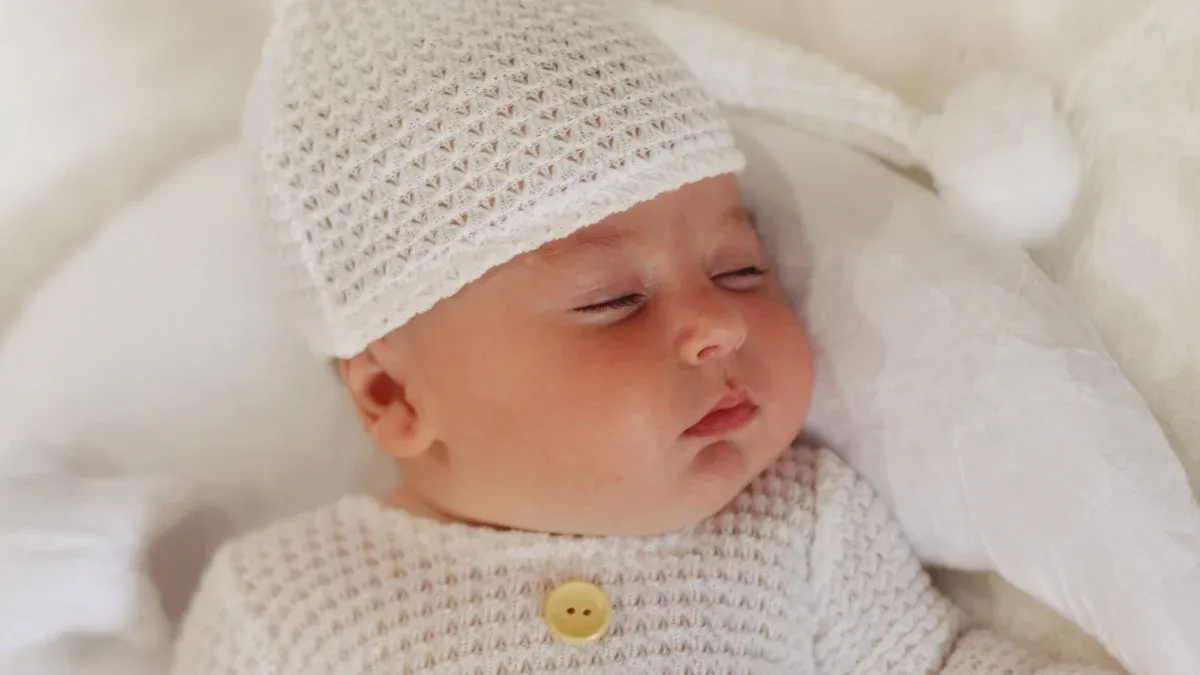
You know that feeling when you see something so adorable you just have to knit it? Baby knitting brings out that joy every time. Imagine soft yarn in your hands, turning into the sweetest baby hat or the cutest booties. These ideas make every baby knitting project feel special. You can knit for a new arrival, a gift for a baby shower, or simply because you love adorable baby things. Each project gives you new ideas and a reason to knit for baby smiles. Baby knitting patterns never go out of style!
Key Takeaways
Pick soft yarn that is hypoallergenic, like organic cotton or bamboo. This helps keep babies safe and comfortable.
Begin with simple baby knitting patterns, such as strawberry booties or a bumblebee hat. These patterns help you learn new skills fast.
Always check your gauge by making a swatch first. This makes sure your project will fit the baby well.
Knit bigger sizes or use adjustable designs to plan for growth. This way, your gift will last longer as the baby grows.
Choose yarn that can be washed in a machine. Follow gentle washing and storing tips to keep your knits soft and clean.
Add easy decorations like ribbons or pom-poms, but do this carefully. Do not use small parts that could be dangerous.
Join knitting groups online or in your area to get ideas. You can share your work and learn new patterns from others.
Free modern baby knitting patterns online have stylish, textured, and colorful projects. These patterns are good for all skill levels.
Baby Knitting Patterns
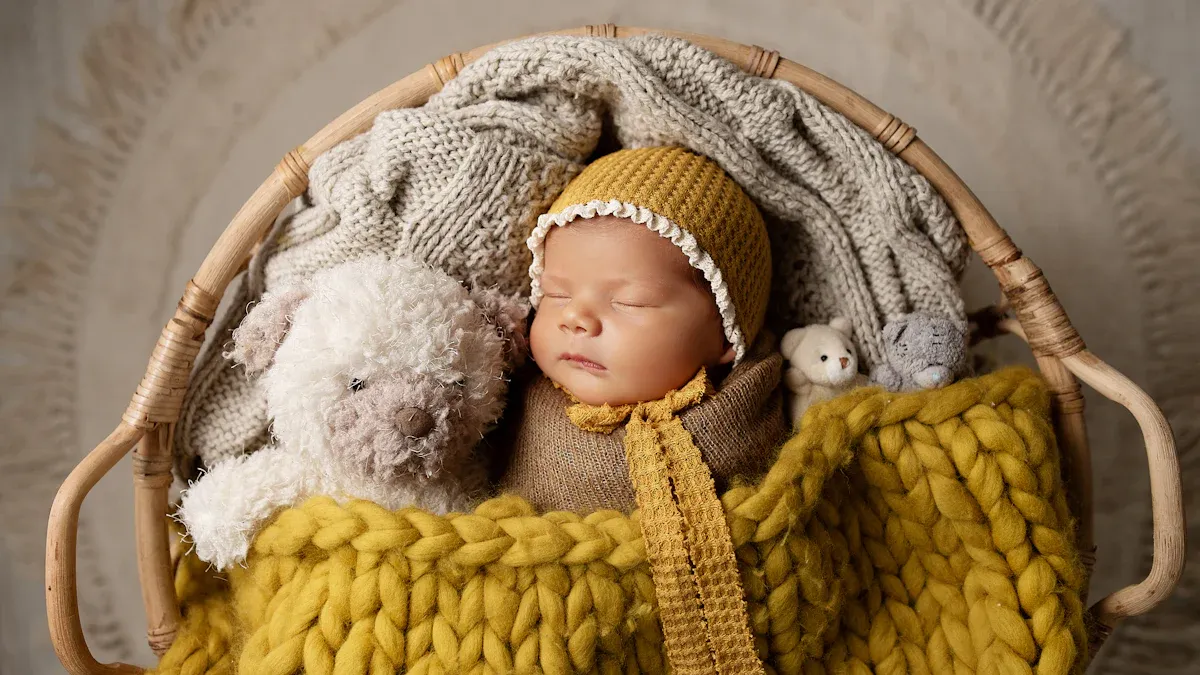
Strawberry Booties
Cute Fruit Theme
You want to make something truly adorable for a new baby? Try strawberry booties! These tiny shoes look just like sweet strawberries. The bright red and green colors pop on little feet. You can knit these as a fun project for a baby shower or a first birthday. Many baby knitting patterns feature fruit themes, but strawberry booties always stand out. They make a cute gift and bring smiles to everyone who sees them.
Tip: Add a tiny white seed stitch to mimic real strawberries. This detail makes your knitted baby booties even more special.
Soft Yarn Choices
Babies need soft, gentle yarn. Choose a cotton or bamboo blend for these booties. These yarns feel soft and keep little toes comfy. You can knit a pair in just a few hours. The easy pattern works well for beginners. You only need basic stitches, so you can finish this project quickly. Strawberry booties are a great way to try new baby knitting patterns and practice your skills.
Lacy Bonnet
Delicate Details
A lacy bonnet gives a baby a classic, timeless look. You can knit this hat with pretty lace stitches and gentle curves. The openwork design keeps the baby cool but still cozy. Many baby hat knitting patterns use lace for a delicate touch. This project lets you play with texture and learn new techniques. You can add a ribbon or a small bow for extra charm.
Lacy bonnets make adorable photo props.
They work well for special occasions or everyday wear.
You can knit one as a thoughtful gift for a new baby.
Pastel Colors
Soft pastel colors look beautiful in lacy bonnets. Try pale pink, baby blue, or mint green. These shades match most baby outfits. You can knit several bonnets in different colors for variety. The easy pattern lets you finish a bonnet in a weekend. Lacy bonnets are a favorite in baby knitting patterns because they look fancy but feel easy to make. You can use leftover yarn from other hats and booties projects, making this a free and fun way to use up your stash.
Bumblebee Hat
Playful Design
The bumblebee hat is a playful project that brings a smile to everyone. You can knit black and yellow stripes for a bold look. Add tiny antennae for extra cuteness. This baby hat knitting pattern is perfect for spring and summer. Babies look adorable in themed hats and booties, and the bumblebee hat is always a hit. You can use this idea for a costume or just for fun photos.
Note: Use soft, stretchy yarn so the hat fits comfortably. Babies move a lot, so you want the hat to stay in place.
Easy for Beginners
You do not need advanced skills for this project. The bumblebee hat uses easy stitches and simple color changes. You can knit it in a few hours. Many free modern baby knitting patterns include this style because it is quick and easy. If you are new to knitting patterns, this is a great place to start. You can make matching hats and booties for a complete set. The bumblebee hat is a fun way to practice your skills and create something adorable for a baby.
Baby Bear Balaclava
Cozy and Warm
You want your baby to stay warm during chilly days. The baby bear balaclava does just that. This pattern covers the head, neck, and even the ears. You knit it in one piece, so there are no seams to bother your little one. The design hugs the face and keeps out the cold. You can use soft, chunky yarn for extra warmth. Babies love the cozy feel, and you will love how easy this project is. Many baby knitting patterns focus on comfort, but the balaclava stands out for its full coverage.
You can knit this in neutral colors or go bold with fun shades.
The pattern uses easy stitches, so you can finish it quickly.
This is a great project if you want to try something different from a regular baby sweater.
Tip: Choose a hypoallergenic yarn for sensitive skin. Babies need gentle fibers, especially around the face.
Fun for Photos
The baby bear balaclava makes every baby look extra cute. The pattern usually includes little bear ears on top. You can knit the ears separately and sew them on. These details turn a simple balaclava into a playful accessory. Parents love taking photos of their babies in this hat. It works well for family pictures, holidays, or just a fun day at home. You can even match the balaclava with a baby sweater for a complete look.
This pattern is easy to customize. Add a pom-pom or use variegated yarn for a unique touch.
The baby bear balaclava is a favorite in baby knitting patterns because it is both practical and adorable.
Cable Knit Blanket
Textured Stitches
A cable knit blanket feels soft and looks beautiful. You knit cables by crossing stitches over each other. This creates a raised, twisty pattern that stands out. Many knitters love cable designs because they add texture and interest. You can find an easy baby blanket knitting pattern that uses simple cables. Even if you are new to cables, you can follow step-by-step instructions. The result is a baby blanket that feels plush and looks fancy.
Cables make the blanket thicker and warmer.
You can knit cables in straight lines or create shapes like hearts or diamonds.
This baby blanket pattern works well for boys and girls.
Note: Use a light color to show off the cable details. Soft pastels or cream shades look classic and clean.
Modern Look
You want a baby blanket that fits today’s style. The cable knit blanket gives you a modern look with timeless charm. You can knit it in one solid color or use stripes for a fresh twist. Many parents love this easy baby blanket knitting pattern because it matches any nursery. The blanket makes a perfect gift for a baby shower or a new arrival. You can also use this pattern to practice your cable skills before trying more complex baby sweater knitting patterns.
The cable knit blanket is easy to care for if you choose machine-washable yarn.
You can adjust the size to make a stroller blanket or a larger throw.
This baby blanket pattern is a must-try for anyone who loves knitting patterns with texture.
Tummy Time Blanket
Garter Stitch Simplicity
Tummy time helps babies build strength. You can knit a tummy time blanket that is soft and supportive. The garter stitch is the easiest stitch you can use. You knit every row, so the fabric stays flat and stretchy. This easy baby blanket knitting pattern is perfect for beginners. You do not need to worry about complicated steps. The blanket grows quickly, and you can finish it in just a few days.
Garter stitch makes the blanket squishy and comfy for babies.
You can knit stripes or blocks of color for a playful look.
This baby blanket pattern is easy to memorize, so you can knit while watching TV or chatting with friends.
Pro Tip: Add a border in a contrasting color for a polished finish. It makes your blanket stand out.
DK Weight Yarn
DK weight yarn is a great choice for a tummy time blanket. It feels light but still warm. You can knit with DK yarn and get a soft, flexible fabric. Many easy baby blanket knitting patterns use DK yarn because it is not too thick or thin. Babies love the gentle touch, and you will love how easy it is to work with. This yarn also comes in many colors, so you can match any nursery theme.
DK yarn helps your blanket dry quickly after washing.
You can use leftover yarn from other baby knitting patterns to make a colorful patchwork blanket.
The tummy time blanket is a simple project that gives you a lot of joy. You can knit one for every baby in your life.
Very Hungry Caterpillar Sleep Sack
Themed Gift Idea
Do you want to make a baby gift that stands out? Try the Very Hungry Caterpillar sleep sack. This pattern takes inspiration from the beloved children’s book. You get to knit bright stripes in green, red, and yellow. The sleep sack wraps the baby in soft, colorful comfort. Parents love this themed gift because it feels playful and unique. You can use this sleep sack for naps, stroller rides, or even as a photo prop.
Babies stay cozy and warm inside the sleep sack.
The design keeps little legs covered but gives enough room to kick.
You can finish this project quickly, even if you are new to baby knitting patterns.
Tip: Use soft, washable yarn. Babies can be messy, so easy care is a must.
Matching Hat Option
You can add even more fun by knitting a matching caterpillar hat. The hat completes the look and makes the set perfect for photos. You only need a small amount of yarn for the hat. Add little antennae to the top for extra cuteness. Many free modern baby knitting patterns include matching hats and accessories. You can give the sleep sack and hat as a set for a baby shower or a first birthday.
The hat fits snugly and keeps the baby’s head warm.
You can use leftover yarn from the sleep sack for the hat.
This project lets you practice color changes and simple shaping.
Baby Sweater Knitting Patterns
Classic Cardigan
Every baby needs a classic cardigan. This baby sweater pattern never goes out of style. You can knit it in soft pastels or bold colors. The cardigan opens in the front, so it is easy to put on and take off. Parents love this because they do not have to pull it over the baby’s head. You can choose an easy baby cardigan pattern if you are just starting out. The pattern uses simple stitches and basic shaping.
Cardigans work for any season. Layer them over onesies or dresses.
You can add cute buttons or a ribbon tie for a special touch.
The baby cardigan pattern is easy to adjust for different sizes.
Note: Try knitting two cardigans in different colors. You will always have a clean one ready!
Chunky Pullover
If you want something warm and quick, knit baby sweaters in a chunky pullover style. Chunky yarn knits up fast and feels extra cozy. The pullover slips over the baby’s head and keeps them warm on chilly days. You can find many baby sweater knitting patterns that use thick yarn and simple stitches. The chunky pullover looks modern and feels soft against the skin.
Choose bright colors or fun stripes for a playful look.
Chunky pullovers make great gifts for winter babies.
You can finish this project in just a weekend.
Pro Tip: Use a stretchy cast-on and bind-off. This helps the sweater fit over the baby’s head with ease.
Simple Mittens Set
No-Finger Design
Babies scratch themselves easily. Simple mittens help protect their delicate skin. This set uses a no-finger design, so you do not have to worry about tricky shaping. You knit a small tube with a rounded end. The mittens slip on and stay put with a gentle cuff. You can make several pairs in different colors to match hats or sweaters.
No-finger mittens are quick to knit and use very little yarn.
You can finish a pair in an evening.
These mittens make a thoughtful add-on to any baby gift.
Prevents Scratching
You want to keep your baby safe and comfortable. Simple mittens prevent scratching and keep tiny hands warm. The soft yarn feels gentle on sensitive skin. You can use leftover yarn from other projects, making this a great way to use up scraps. Many parents appreciate having extra mittens on hand.
Mittens are easy to wash and dry.
You can add a ribbon or crochet chain to connect the pair, so you never lose one.
Simple mittens are a must-have in any collection of baby knitting patterns.
Free Modern Baby Knitting Patterns
Are you searching for stylish and easy baby knitting patterns that do not cost anything? You can find so many free modern baby knitting patterns online. These patterns let you try new styles and techniques without spending money. You get to make adorable gifts and keep your knitting fresh and fun.
Soft Pastel Shades
Soft pastel shades always look sweet on babies. You can choose colors like mint, peach, lavender, or sky blue. These gentle colors work well for any season. Many free modern baby knitting patterns use pastels to create a calm and cozy look. You can knit hats, blankets, or even free baby sweater patterns in these shades.
Pastel yarns hide small mistakes, so your project looks neat.
You can mix and match colors for stripes or color blocks.
Pastel shades make your handmade gifts look modern and trendy.
Tip: Try using a color palette generator online. You can find the perfect mix of pastels for your next free project.
You do not need to stick to just one color. Try a gradient effect by blending two or three pastels together. This technique looks fancy but feels easy to do. You can use leftover yarn from other free projects to create a unique look.
Sumptuous Textures
Modern baby knitting patterns often focus on texture. You can use stitches like seed stitch, moss stitch, or waffle stitch. These stitches add depth and interest to your work. Many free modern baby knitting patterns include texture to make simple shapes stand out.
Textured stitches feel soft and plush for babies.
You can knit a blanket with chunky cables or a hat with a bumpy pattern.
Texture makes your project look expensive, even when you use free patterns.
Note: Choose a yarn that shows off your stitches. Smooth, light-colored yarns work best for textured designs.
You can find free patterns for everything from mittens to sweaters. Many websites offer free baby sweater patterns with fun textures and easy instructions. You do not need to buy a book or magazine. Just download a free pattern and start knitting right away.
Here are some ideas for free modern baby knitting patterns you can try:
Textured Baby Blanket – Use a free pattern with basketweave or honeycomb stitches.
Pastel Beanie – Knit a soft hat in your favorite pastel shade.
Chunky Cable Sweater – Look for free baby sweater patterns with bold cables.
Simple Booties – Try a free pattern with a ribbed cuff or garter stitch sole.
Modern Stripe Cardigan – Use free instructions to knit a cardigan with wide pastel stripes.
You can join online knitting groups to share your free projects and get new ideas. Many knitters love to swap links to their favorite free modern baby knitting patterns. You can build your own collection of free patterns and never run out of inspiration.
Pro Tip: Always check the yarn requirements before starting a free pattern. You can substitute yarns if you want, but make sure the texture and color still look good together.
You do not need to spend a lot to make something special. Free patterns let you experiment and learn new skills. You can knit for every baby in your life and always have a free project ready to go.
Essential Supplies and Yarn Choices for Baby Knitting Projects
When you start a new baby knitting project, the right supplies make all the difference. You want your handmade gifts to feel soft, safe, and last through many cuddles and washes. Let’s look at the best yarns, tools, and tips for sizing your next baby blanket pattern or tiny sweater.
Soft & Organic Yarn
Hypoallergenic Options
Babies have delicate skin. You want to choose yarns that feel gentle and safe. Many parents worry about allergies or irritation. The National Eczema Association says up to 20% of babies get eczema, so soft yarns matter a lot. Organic cotton yarn works well because it is soft, breathable, and free from harsh chemicals. Bamboo yarn is another great choice. It feels silky and has natural antibacterial properties, which helps keep skin happy. You can also look for yarns with certifications like GOTS or OEKO-TEX® Standard 100. These labels show the yarn is safe and tested for harmful substances.
Organic cotton and bamboo yarns help prevent skin irritation.
Tightly spun yarns do not shed fibers, so they are safer for babies.
Wool is naturally flame-resistant, but some synthetic yarns can melt or burn.
Tip: Always check the yarn label for safety certifications and avoid yarns that feel scratchy or shed.
Machine Washable
You want baby items to stay clean and fresh. Babies can be messy, so machine washable yarn saves you time. Many organic cotton and bamboo yarns can go in the washer and dryer. This makes caring for your baby blanket or sweater easy. Look for yarns that say “machine washable” on the label. Avoid yarns that shrink or felt, like untreated wool.
Essential Tools
Needles & Markers
You do not need fancy tools to knit for babies. A few basics will help you finish any baby blanket pattern or hat. Choose smooth, lightweight needles. Bamboo or plastic needles feel gentle in your hands and do not slip as much as metal ones. Stitch markers help you keep track of rows or pattern repeats. You can use colorful plastic rings or even a loop of yarn.
Here’s a quick list of what you need:
Knitting needles (size depends on your pattern)
Stitch markers
Yarn needle for weaving in ends
Measuring tape
Safety Tips
Safety comes first when you knit for babies. Avoid small buttons, beads, or loose decorations. The American Academy of Pediatrics warns that small parts can be a choking hazard. Choose yarns that do not unravel easily. Tightly spun yarns stay together and do not leave loose fibers. Always check your finished project for loose threads or holes.
Note: If you add embellishments, sew them on very securely and double-check before gifting.
Sizing & Yardage
How Much Yarn
You want to buy enough yarn before you start. Yarn labels tell you how many yards are in each skein. Patterns also list how much yarn you need. It’s smart to buy an extra skein, just in case. If you run out, you might not find the same dye lot again. The fiber content of your yarn affects how much you need and how your baby blanket turns out.
Always check the pattern for yardage.
Buy a little extra to avoid running out.
Fiber content changes how the finished item feels and looks.
Adjusting Sizes
Getting the right size matters. You want your baby blanket or sweater to fit just right. Yarn labels show recommended needle sizes and gauge. Gauge means how many stitches and rows fit in a certain space. If your gauge is off, your project might end up too big or too small. Making a gauge swatch before you start helps you match the pattern. If you use a different yarn, check that it matches the pattern’s gauge and yardage.
Make a small test swatch to check your gauge.
Adjust your needle size if your swatch is too tight or loose.
Substituting yarns can change the weight and look of your project.
Pro Tip: Proper sizing and yardage help your finished baby blanket pattern look and feel just right. You will feel proud when your project matches your vision.
Techniques & Tips
When you start a new baby project, you want everything to go smoothly. Let’s look at some basic techniques and tips that make your knitting journey easy and fun.
Beginner Stitches
Garter Stitch
Garter stitch is the first stitch most people learn. You just knit every row. This stitch feels soft and stretchy. It makes your project look neat and tidy. Many baby patterns use garter stitch because it is easy to remember. You can make a whole blanket or a scarf with this stitch. If you want an easy start, try garter stitch for your next project.
Tip: Garter stitch hides small mistakes. Your work will still look great even if you miss a stitch.
Stockinette
Stockinette stitch gives you a smooth side and a bumpy side. You knit one row, then purl the next. This stitch looks classic and works well for sweaters and hats. Stockinette is easy to learn after you master garter stitch. You can make baby sweaters or hats with this stitch for a clean, modern look.
Stockinette curls at the edges. Add a border in garter stitch to keep it flat.
This stitch helps you practice switching between knit and purl.
Reading Patterns
Abbreviations
Knitting patterns use lots of short forms. You might see “k” for knit or “p” for purl. “Sts” means stitches. These abbreviations make patterns easy to read and follow. Most patterns have a key or legend at the start. Always check this before you begin.
Abbreviation | Meaning |
|---|---|
k | knit |
p | purl |
st(s) | stitch(es) |
rep | repeat |
Note: If you get stuck, look up the abbreviation online or ask a friend. It’s easy to find help.
Instructions
Patterns tell you what to do step by step. Read through the whole pattern before you start. This makes it easy to spot any tricky parts. If you see a part that looks hard, practice it on a small piece first. Many baby patterns are easy and use simple steps.
Fixing Mistakes
Dropped Stitches
Everyone drops a stitch sometimes. Don’t worry! Use a crochet hook to pick it up and put it back on your needle. This fix is easy once you try it a few times. If you notice a mistake a few rows back, you can gently pull out your stitches and redo them.
Tip: Keep a crochet hook in your knitting bag. It makes fixing dropped stitches easy.
Tension Issues
Tension means how tight or loose you hold your yarn. If your stitches look uneven, try to relax your hands. Practice makes it easy to keep your tension steady. If your project looks too tight or too loose, change your needle size. This small change can make your knitting easy and smooth.
Check your work every few rows.
Don’t stress about small mistakes. Handmade items always have a special touch.
You can make every project easy and fun with these tips. Practice, patience, and a love for knitting will help you create beautiful baby gifts.
Knit for a New Baby
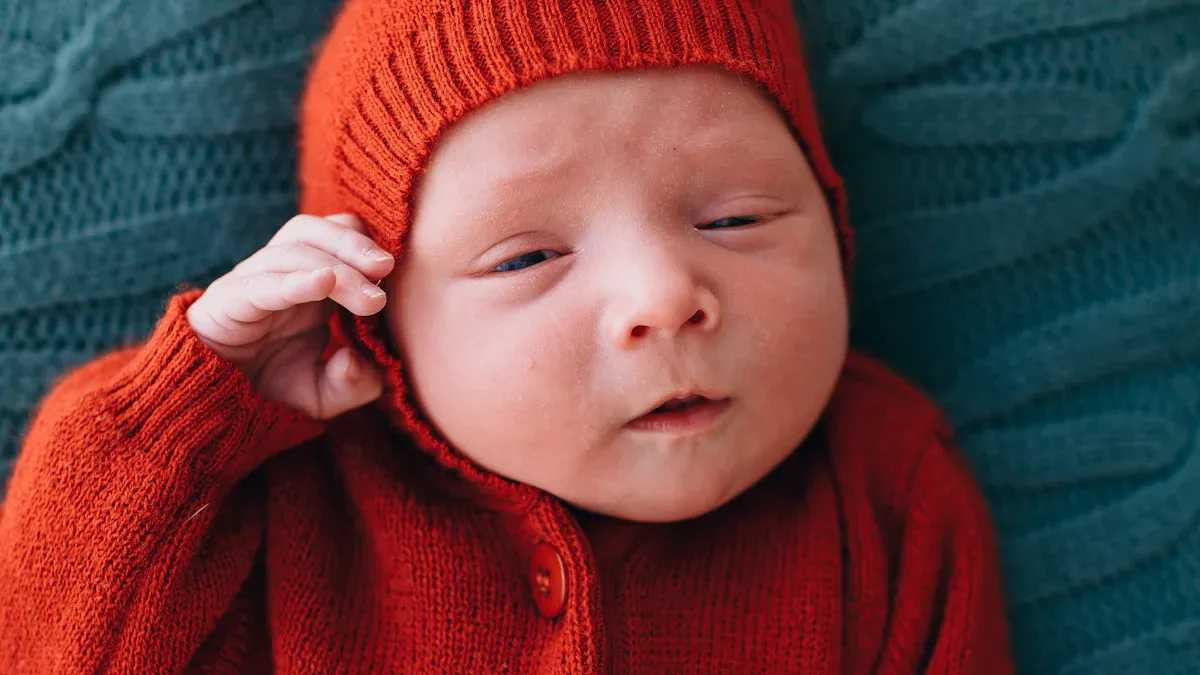
Choosing Size
Growth Room
When you knit for a new baby, picking the right size can feel tricky. Babies grow fast—sometimes faster than you expect! Many parents find that newborn sizes do not fit for long. In fact, about a quarter of babies outgrow newborn clothes right away. You want your handmade gift to last, so it helps to plan for growth.
Here are some smart ways to choose the best size:
Skip newborn sizes if you want your project to last longer.
Babies often have growth spurts before two months, so size up when possible.
Use size charts and look for patterns with adjustable features like stretchy cuffs.
Check the brand’s size chart because sizes can vary a lot.
Watch for signs like tight sleeves or elastic marks—these mean it’s time to go bigger.
Layering is a great trick. Sweaters or cardigans can go over other clothes and fit longer.
Babies can double their birth weight by five months and triple it by one year, so bigger is usually better.
Tip: If you’re not sure, always choose the next size up. Babies will grow into it!
Measuring
You want your project to fit just right. Before you start, measure the baby’s chest, length, and head. If you can’t measure the baby, use a detailed size chart based on age, weight, and height. Many patterns include these charts. Always check if the pattern uses inches or centimeters. Write down your numbers so you can match them to the pattern.
Gauge Swatch
Why It Matters
A gauge swatch is a small sample you knit before starting your main project. It helps you see if your stitches match the pattern’s size. If your gauge is off, your sweater or blanket might turn out too big or too small. Taking a few minutes to knit a swatch saves you time and yarn later.
How-To
To make a gauge swatch, use the same yarn and needles as your pattern. Knit a square about four inches wide. Count how many stitches and rows fit in one inch. Compare your numbers to the pattern. If you have too many stitches, try bigger needles. If you have too few, use smaller needles. Adjust until your swatch matches the pattern’s gauge.
Note: Always wash and dry your swatch the same way you’ll care for the finished item. Some yarns shrink or stretch after washing.
Finishing Touches
Seaming & Blocking
After you finish knitting, you need to put the pieces together. Seaming means sewing the parts with a yarn needle. Try to keep your seams flat and soft so they do not bother the baby. Blocking is the next step. Wet your project, lay it flat, and shape it to the right size. Let it dry. Blocking helps your stitches look neat and even.
Embellishments
You can add special touches to make your gift unique. Try sewing on a soft ribbon, a cute button, or a tiny pom-pom. Make sure everything is secure and safe for babies. Avoid small parts that could come loose. Simple embroidery or a colorful border can also make your project stand out.
Care Tips
Washing
You want your handmade baby knits to stay soft and beautiful. Washing them the right way helps keep them looking new. Babies can be messy, so you will wash these items often. Always check the yarn label first. Some yarns can go in the washing machine, but others need gentle hand washing.
If you use machine-washable yarn, place your baby knits in a mesh laundry bag. This protects them from getting stretched or snagged. Use cold water and a gentle cycle. Choose a mild, baby-safe detergent. Avoid bleach or fabric softeners. These can damage the fibers and irritate a baby’s skin.
For hand washing, fill a basin with cool water and add a small amount of gentle detergent. Swish your item around softly. Do not rub or wring it. Rinse well with clean water. Gently press out extra water by rolling the knit in a towel. Lay it flat on a clean, dry towel to air dry. Shape it back to its original size while it dries.
Tip: Never hang baby knits to dry. Hanging can stretch them out of shape. Always lay them flat.
If you knit for a new baby, you want your gift to last through many washes. Taking a few extra steps during cleaning keeps your hard work looking great.
Storing
Storing your baby knits the right way helps them stay fresh and ready to use. Clean your items before putting them away. Dirt or stains can attract bugs or cause odors. Make sure each piece is completely dry before storing. Damp knits can grow mildew or mold.
Fold your baby knits gently. Place them in a drawer or a storage box. Use acid-free tissue paper between layers if you want to prevent creases. Avoid plastic bags for long-term storage. Plastic can trap moisture and cause damage.
You can add a lavender sachet or cedar block to keep moths away. These natural options smell nice and protect your knits. Keep your storage area cool and dry. Avoid direct sunlight, which can fade colors.
Store baby hats, mittens, and booties together in small boxes.
Keep blankets and sweaters folded flat.
Check your stored items every few months to make sure they stay fresh.
Note: If you plan to give your knits as a gift later, store them in a clean, pet-free area. This keeps them looking and smelling their best.
Taking care of your baby knits means they will last longer and stay soft for every cuddle. With the right washing and storing habits, your handmade gifts will be ready for every special moment.
Community & Inspiration
Share Creations
Social Media
You can find so much inspiration when you share your baby knitting on social media. Posting photos of your finished hats, blankets, or sweaters helps you connect with other knitters. Many people love to see what you make and offer tips or encouragement. Social media sites like Ravelry, Facebook, and Pinterest are full of creative ideas. In fact, a recent survey shows that 52% to 83% of knitters use these platforms to find inspiration and share their projects. Ravelry is the most popular, with 71% of knitters using it, followed by Facebook at 61%.

You can also teach others by sharing your process. Did you know that 87% of knitters have taught someone else to knit? When you post your steps or answer questions, you help the community grow. Sharing your work online makes you part of a bigger group that loves baby knitting as much as you do.
Local Groups
Joining a local knitting group brings even more fun. You get to meet people who enjoy the same hobby. Many knitters say they feel more inspired after attending meetups or yarn events. About 65% of knitters want to attend free yarn events to share ideas and network. You can bring your latest project, swap patterns, or just chat about your favorite yarns. Local groups often host charity drives, baby blanket donations, or group challenges. You might even make new friends who cheer you on with every stitch.
Tip: Check your local library, craft store, or community center for knitting meetups. You can also start your own group if you do not see one nearby.
Find More Patterns
Books & Websites
You never run out of ideas when you know where to look. Most knitters—about 90%—find patterns online. Websites like Ravelry, LoveCrafts, and Pinterest offer thousands of baby knitting patterns. You can search by skill level, yarn type, or style. Many sites let you download a free pattern to try something new. If you like reading, check out books at your library or bookstore. Knitting books often include step-by-step photos and helpful tips.
Here’s a quick list of places to find more patterns:
Ravelry (huge online community)
LoveCrafts (lots of baby projects)
Pinterest (great for visual ideas)
Local library (books for all levels)
Knitting Challenges
Knitting challenges keep things exciting. You can join a challenge online or with your local group. These events encourage you to try new stitches, finish a project, or use up leftover yarn. Many knitters say challenges help them stay motivated and learn new skills. You might even win a prize or get featured in a group gallery. Challenges often focus on baby items, since baby blankets and small projects are among the most popular things to make.
Note: Share your progress during a challenge. You will inspire others and get helpful feedback.
When you join the knitting community, you find endless support and inspiration. You can share your creations, discover new patterns, and make friends who love to knit as much as you do.
You have so many adorable baby knitting patterns to try. Pick your favorite and start your next project with confidence. Handmade baby gifts always mean so much. Share your finished knits with friends, family, or online groups. You will inspire others and feel proud of your work.
Remember, every stitch you make brings comfort and joy to a little one. Keep creating and enjoy every moment with your knitting!
FAQ
How do I choose the best yarn for baby knitting?
You want soft, hypoallergenic yarn. Look for organic cotton or bamboo. These feel gentle on baby skin. Always check the label for “machine washable.” Babies can be messy, so easy care matters.
Can I knit baby items if I am a beginner?
Yes! Many baby knitting patterns use basic stitches. Start with simple hats, blankets, or booties. You will build confidence as you go. Practice makes you better.
How do I know what size to knit for a baby?
Check the baby’s age and use a size chart. Babies grow fast, so pick a size up if you are unsure. Sweaters and hats with stretchy edges fit longer.
What should I avoid when knitting for babies?
Avoid small buttons, loose embellishments, or scratchy yarn. Babies put things in their mouths. Always secure decorations tightly. Choose soft, safe materials.
How do I wash hand-knit baby items?
Always read the yarn label first.
If it says “machine washable,” use cold water and a gentle cycle. For hand-wash yarn, use cool water and mild soap. Lay flat to dry.
Where can I find free modern baby knitting patterns?
You can find free patterns on websites like Ravelry, LoveCrafts, and Pinterest. Many blogs and yarn brands also share free downloads. Try searching “free modern baby knitting patterns” online.
What if I make a mistake in my knitting?
Don’t worry! Everyone makes mistakes. Use a crochet hook to fix dropped stitches. If you need to, gently pull out a few rows and try again. Practice helps you improve.
Can I use leftover yarn for baby projects?
Absolutely! Small projects like mittens, hats, or booties use very little yarn. Mix colors for stripes or blocks. Leftover yarn works great for creative baby gifts.





